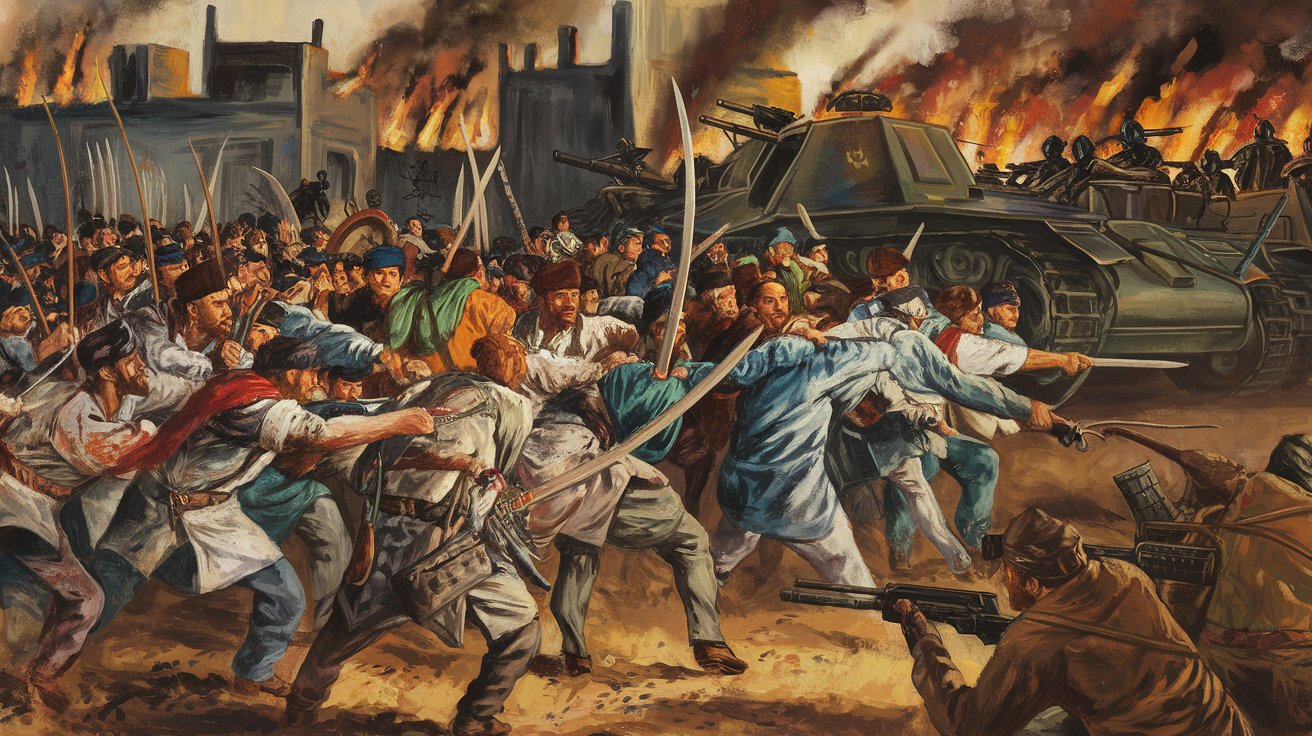
The Kirghiz Rebellion of 1916, also known as the Urkun, was a significant uprising against Russian rule in Central Asia. This revolt was driven by the Tsarist government's conscription policies during World War I, which forced many Kirghiz and Kazakh men into labor battalions. Thousands of Kirghiz people resisted, leading to violent clashes and mass migrations. The rebellion resulted in severe repercussions, including widespread famine and displacement. Understanding the Kirghiz Rebellion offers a glimpse into the struggles of Central Asian peoples under colonial rule. Here are 25 facts that shed light on this pivotal event in Kirghiz history.
Key Takeaways:
- The Kirghiz Rebellion, sparked by conscription and land confiscations, led to brutal reprisals and a significant diaspora, shaping the Kirghiz people's national identity and inspiring resistance against oppression.
- The rebellion's legacy includes annual commemorations, literature, and international recognition, highlighting the Kirghiz people's resilience and the impact of colonialism on indigenous populations.
What Sparked the Kirghiz Rebellion?
The Kirghiz Rebellion, also known as the Urkun, was a significant uprising in Central Asia. It involved the Kirghiz people against the Russian Empire during World War I. Understanding the causes and events of this rebellion sheds light on the struggles and resilience of the Kirghiz people.
- The rebellion began in 1916 due to the Russian Empire's conscription of Central Asian men for labor in World War I.
- The Kirghiz people were traditionally exempt from military service, making the conscription order a severe shock.
- Economic hardships and land confiscations by Russian settlers fueled discontent among the Kirghiz.
- The rebellion was part of a larger wave of unrest across Central Asia, including in Kazakhstan and Uzbekistan.
Key Events During the Kirghiz Rebellion
The Kirghiz Rebellion saw numerous battles, massacres, and significant movements of people. These events highlight the intensity and scale of the conflict.
- The rebellion officially started on July 4, 1916, in the Semirechye region.
- Kirghiz rebels attacked Russian settlements, leading to violent clashes.
- Russian military forces responded with brutal reprisals, including mass executions.
- Thousands of Kirghiz fled to China to escape the violence.
- The Battle of Lake Issyk-Kul was one of the major confrontations during the rebellion.
Impact on the Kirghiz Population
The rebellion had a profound impact on the Kirghiz people, both immediately and in the long term. The consequences were devastating and reshaped the region's demographics.
- An estimated 100,000 Kirghiz were killed during the rebellion and subsequent reprisals.
- Many Kirghiz who fled to China never returned, leading to a significant diaspora.
- The rebellion caused widespread famine and disease among the Kirghiz population.
- The Russian Empire implemented harsh measures to suppress further uprisings, including mass arrests and executions.
- The rebellion left deep scars on the collective memory of the Kirghiz people, influencing their national identity.
Legacy of the Kirghiz Rebellion
The Kirghiz Rebellion is remembered as a pivotal moment in the history of the Kirghiz people. Its legacy continues to influence the region today.
- The rebellion is commemorated annually in Kyrgyzstan as a day of mourning.
- Monuments and memorials have been erected to honor the victims of the rebellion.
- The rebellion is a subject of study in Kyrgyzstan's schools and universities.
- It has inspired numerous works of literature, art, and film in Kyrgyzstan.
- The rebellion is seen as a symbol of resistance against oppression and colonialism.
International Recognition and Historical Significance
The Kirghiz Rebellion has gained international recognition over the years. Its historical significance extends beyond Central Asia.
- Historians consider the rebellion a key event in the history of Central Asian resistance to Russian rule.
- The rebellion is often compared to other anti-colonial uprisings around the world.
- International scholars have conducted extensive research on the rebellion, contributing to a broader understanding of its causes and consequences.
- The rebellion has been featured in various international documentaries and academic publications.
- It serves as a case study in discussions about the impact of colonialism and imperialism on indigenous populations.
- The Kirghiz Rebellion remains a powerful reminder of the resilience and determination of the Kirghiz people in the face of adversity.
The Kirghiz Rebellion's Impact
The Kirghiz Rebellion of 1916 left a lasting mark on Central Asian history. This uprising against Russian rule highlighted the struggles and resilience of the Kirghiz people. The rebellion was a response to forced conscription, land seizures, and cultural suppression. Thousands lost their lives, and many more were displaced. Despite the rebellion's failure, it sparked a sense of national identity and resistance that influenced future movements. The events of 1916 are a reminder of the complex and often painful history of the region. Understanding these facts helps us appreciate the courage and determination of those who fought for their rights. The Kirghiz Rebellion remains a significant chapter in the story of Central Asia, illustrating the enduring human spirit in the face of oppression.
Frequently Asked Questions
Was this page helpful?
Our commitment to delivering trustworthy and engaging content is at the heart of what we do. Each fact on our site is contributed by real users like you, bringing a wealth of diverse insights and information. To ensure the highest standards of accuracy and reliability, our dedicated editors meticulously review each submission. This process guarantees that the facts we share are not only fascinating but also credible. Trust in our commitment to quality and authenticity as you explore and learn with us.
